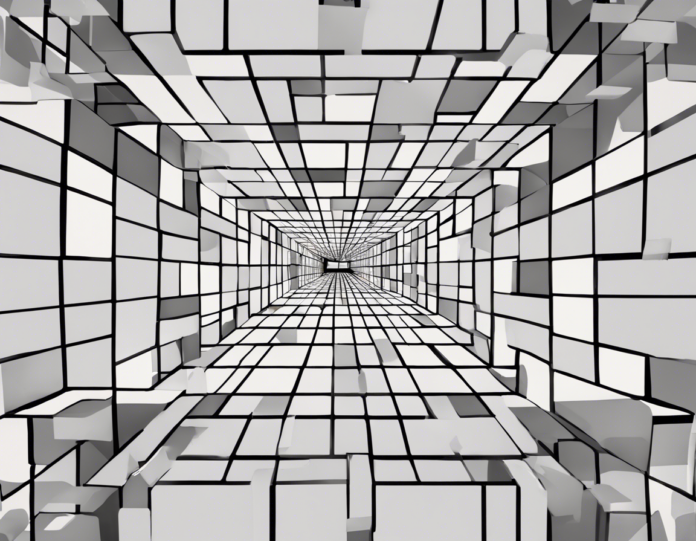Squares and Rectangles: Understanding the Relationship
When it comes to geometry, squares and rectangles are commonly known shapes that often spark confusion in distinguishing one from the other. While both shapes have similar characteristics, squares possess unique properties that set them apart. Understanding the relationship between squares and rectangles can help clarify common misconceptions and appreciate the versatility of squares.
Defining Squares and Rectangles
To begin our exploration, let's define squares and rectangles:
- Square: A square is a quadrilateral with four equal sides and four right angles.
- Rectangle: A rectangle is a quadrilateral with opposite sides that are equal in length and four right angles.
From these definitions, we can see that all squares are rectangles, but not all rectangles are squares. The key distinguishing feature of a square is that all sides are equal in length, whereas a rectangle may have two pairs of equal-length sides.
Every Square Is a Rectangle
One fundamental concept to grasp is that every square is a rectangle. This statement can be confusing at first glance, as squares and rectangles are often treated as separate entities. However, the definition of a rectangle includes squares due to the nature of their properties.
To illustrate this point, consider the defining characteristics of a rectangle: four right angles and opposite sides that are equal in length. A square meets these criteria perfectly, as it not only has four right angles but also has all sides of equal length. In other words, a square is a specialized type of rectangle where all sides are the same.
Properties of Squares and Rectangles
Now that we understand the relationship between squares and rectangles, let's explore some key properties of these shapes:
- Equal Angles: Both squares and rectangles have four right angles, making them quadrilaterals with predictable corner angles.
- Diagonals: In a square, the diagonals are equal in length and bisect each other at right angles. In a rectangle, the diagonals are also equal but may not intersect at right angles.
- Symmetry: Squares exhibit rotational symmetry of order 4, meaning they can be rotated by 90 degrees and still appear the same. Rectangles lack this degree of symmetry due to their unequal side lengths.
Real-World Applications
The versatility of squares extends beyond geometry and holds relevance in various real-world applications. Consider the following instances where squares play a crucial role:
- Architecture: Square tiles, windows, and floor layouts are common in architectural design, offering a sense of symmetry and balance.
- Art and Design: Square canvases, frames, and patterns are prevalent in art and design, providing a structured and organized aesthetic.
- Technology: Square screens, icons, and interfaces are integral to modern technology, facilitating user interaction and visual clarity.
By recognizing the prevalence of squares in everyday life, we can appreciate their significance and practicality in diverse fields.
Exploring Common Misconceptions
Despite the clear distinctions between squares and rectangles, misconceptions often arise regarding their properties. Let's address some common myths and clarify the facts:
- Myth: All rectangles have sides of equal length.
-
Fact: Rectangles can have two pairs of equal sides, but not all sides are necessarily the same length.
-
Myth: Squares and rectangles have different numbers of right angles.
-
Fact: Both squares and rectangles have four right angles, making them geometrically similar in this aspect.
-
Myth: Squares are not considered rectangles.
- Fact: Every square is a rectangle, as it meets the criteria of having four right angles and opposite sides of equal length.
By debunking these myths, we can enhance our understanding of squares and rectangles and avoid common misconceptions.
Frequently Asked Questions (FAQs)
- Are squares considered a subset of rectangles?
-
Yes, squares are a specialized type of rectangle where all sides are equal in length.
-
What is the formula for finding the perimeter of a square?
-
The perimeter of a square is calculated by multiplying the length of one side by four (perimeter = 4 * side length).
-
How do squares and rectangles differ in terms of area calculation?
-
The area of a square is determined by squaring the length of one side (area = side length^2), while the area of a rectangle is calculated by multiplying the length and width of the shape.
-
Can a square be classified as a rhombus?
-
Yes, a square is a special type of rhombus where all angles are right angles.
-
What role do squares play in tessellations?
- Squares are a common shape used in tessellations due to their ability to fit together seamlessly without any gaps or overlaps.
By addressing these frequently asked questions, we can clarify doubts and deepen our knowledge of squares as a subset of rectangles.
In conclusion, understanding the relationship between squares and rectangles reveals the inherent versatility and interconnectedness of these geometric shapes. By recognizing that every square is a rectangle, we can appreciate the unique properties of squares while acknowledging their place within the broader category of rectangles. Through exploration and clarification, we unveil the beauty and significance of squares in both theoretical geometry and practical applications.

